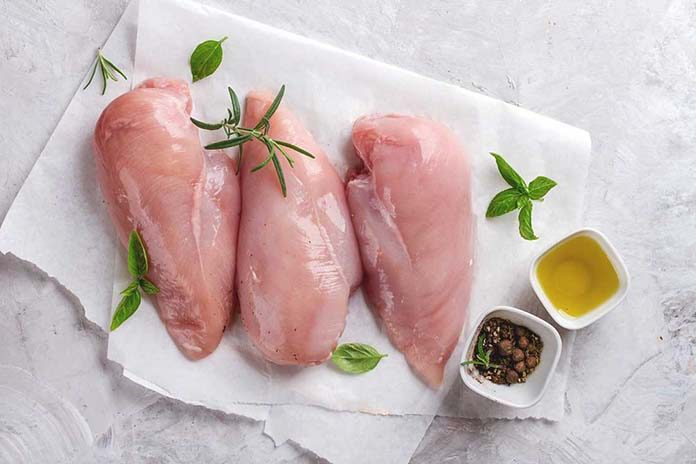
Wooden breast (WB) is a myopathy that affects meat quality traits in modern broilers and it has been associated with an increased BW gain and high breast meat yield. Although several studies revealed the negative effects of this disorder on meat characteristics, there is limited information comparing its effects at different slaughtering age. Therefore, the aim of this set of studies was to evaluate the effects of WB myopathy on breast meat quality traits (drip and cook loss, pH, color, and shearforce) at 35, 42, 51, 55, and 61 days.
At processing day, live BW, carcass yield and breast fillet samples were obtained. Subsequently, samples were subjected to palpation and a WB score was given associated with muscle hardness (1 = none, 2 = mild, 3 = medium, and 4 = severe).
Each slaughter age was analyzed separately and individual breast fillets samples were considered as the experimental unit for all the analyses. Data were analyzed using one-way ANOVA and mean separation was done by Tukey’s test. A decision tree analysis was conducted to classify WB scores according to BW, carcass and breast yield. At 35 days, the highest (P<0.05) pH values at 6 and 24h post-slaughter (6.07 and 6.12, respectively) were observed in samples affected with severe WB as compared with samples with lower WB severity scores.
In addition, weak positive correlations between WB with live BW and breast meat yield were observed (P<0.01; r = 0.24, and 0.22, respectively). Results from broiler slaughter at 42 and 51 days, showed (P<0.05) higher pH (6 and 24h post-slaughter), and colorimeter values L* and b* in fillets with severe WB compared with samples with no WB.
Additionally, greater drip and cook loss, and shear force (P<0.01) in samples affected with severe WB were observed when compared with samples with no WB at 51 d. Moreover, a moderate correlation (r = 0.34; P<0.01) was detected between WB severity with L* value at this age. At 55 days, breast fillets with severe WB had greater drip and cook loss, pH (t = 24h), L*, and b* values as compared with samples with no WB (score 1).
Results obtained at 61 d showed a weak positive correlation between WB severity score and breast meat yield (r = 0.19; P<0.05). In addition, severe WB (score 4) resulted in higher (P<0.05) shear force, pH, and b* values compared with samples without WB. Decision tree analysis estimated WB higher than score 3 when live BW and breast meat yield differed in ~130 g and 0.3% points among broilers at 61days.
In conclusion, WB affected breast meat quality traits at different slaughter age and findings observed in these 5 experiments suggested that WB was not strongly associated with higher BW and meat yield, but probably there is a threshold effect that may be associated with severe WB.

















